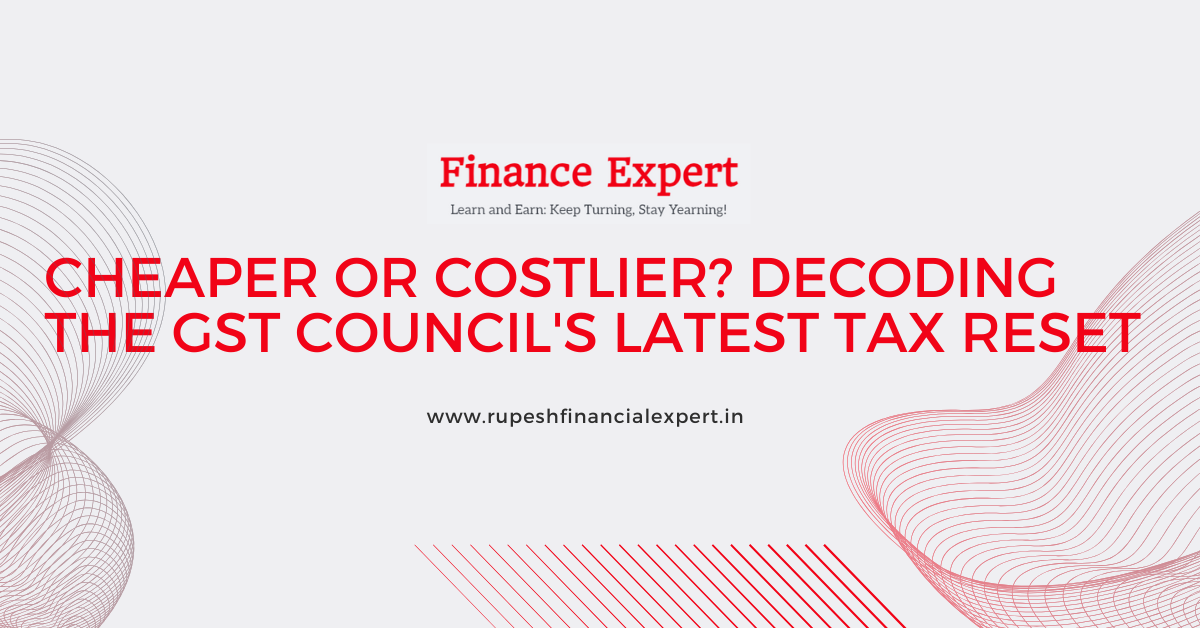
The Goods and Services Tax (GST) Council has announced a major tax reset, effective September 22, 2025. The revamp aims to reduce the burden on households and essential sectors while tightening taxation on luxury and “sin goods.”
Here’s a breakdown of what will get cheaper and what will cost more under the new structure.
What Gets Cheaper
- Daily essentials
Products like toothpaste, shampoo, soap, hair oil, and talcum powder will now attract only 5% GST, down from 12–18%. - Packaged food and snacks
Ready-to-eat namkeens, mixtures, bhujia, and similar packaged snacks move to the 5% slab. - Healthcare & insurance
* Common medicines and diagnostic items reduced to 5%.
* Life and health insurance products will be GST-exempt.
* Corrective spectacles, thermometers, oxygen equipment also see lower rates. - Appliances & electronics
Air-conditioners, TVs, dishwashers, set-top boxes, and monitors shift from 28% to 18%. - Automobiles
* Small petrol/LPG cars (≤1200cc), diesel cars (≤1500cc), hybrids, motorcycles (≤350cc), and three-wheelers taxed at 18% instead of 28%.
* Electric vehicles remain at 5%. - Farm goods & building materials
Fertilisers, tractors, cement, and agricultural machinery get lower GST. Fly-ash concrete blocks fall to 5%. - Education supplies
Exercise books, notebooks, pencils, maps, globes, crayons, and erasers now fall in nil or 5% slab.
What Gets Costlier
- Apparel over ₹2,500
Clothes and accessories above ₹2,500 will face 18% GST, up from 12%. - Coal
Coal rates jump sharply from 5% to 18%. - Luxury & sin goods (40% GST slab introduced)
* Aerated, carbonated, and sugary drinks.
* Cars above 1,200cc or 4,000mm in length, motorcycles above 350cc.
* Yachts, aircraft, racing cars.
* Pan masala, cigarettes, gutkha, and tobacco products (shift delayed until state-compensation loans are repaid).
Snapshot: Cheaper vs Costlier
| Category | GST Change | Effect |
| Daily essentials | 18% → 5% | Cheaper |
| Packaged snacks | 12% → 5% | Cheaper |
| Medicines & insurance | 12/18% → 5% / exempt | Cheaper |
| Appliances & electronics | 28% → 18% | Cheaper |
| Small cars & 2-wheelers | 28% → 18% | Cheaper |
| Education items | 12% → 0–5% | Cheaper |
| Apparel > ₹2,500 | 12% → 18% | Costlier |
| Coal | 5% → 18% | Costlier |
| Luxury & sin goods | 28% → 40% | Costlier |
Bottom Line
The GST reset brings relief for households with cheaper daily-use items, food, appliances, and cars. At the same time, it puts a heavier tax burden on luxury, high-end, and harmful products. With implementation from September 22, 2025, consumers and businesses must gear up for the new pricing structure.




